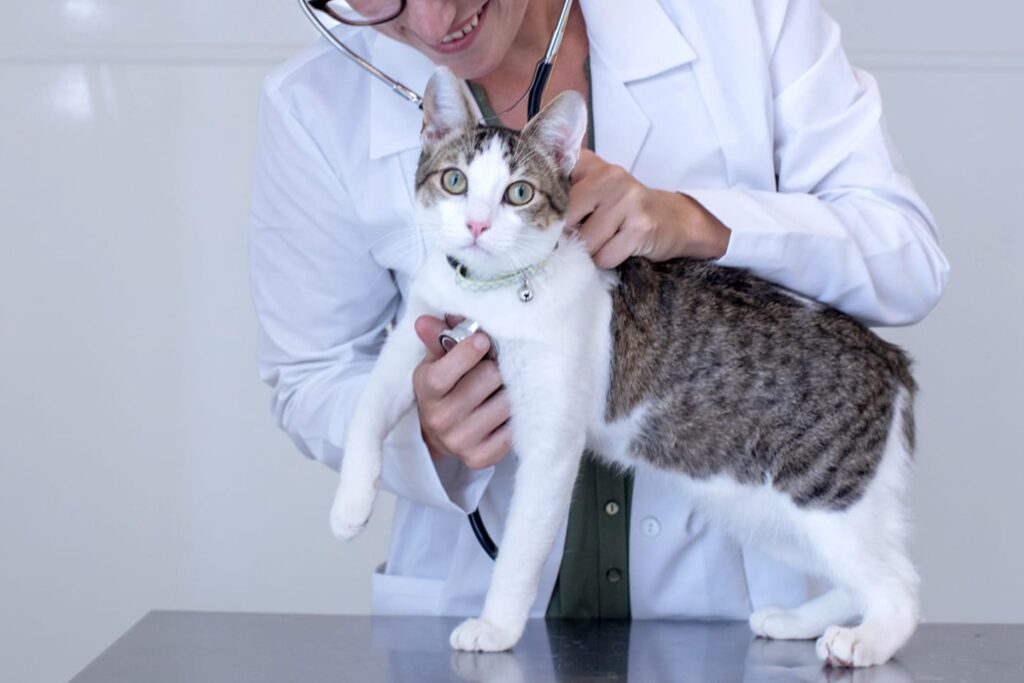Feline Leukemia: What You Need to Know


Let’s face it: Feline leukemia definitely sounds scary. But while it’s not something to be taken lightly, it’s also not necessarily an immediate death sentence. Try not to panic if your cat is diagnosed and don’t necessarily write off adopting a cat with the virus. Feline leukemia virus, or FeLV, is the second leading cause of death in cats. However, it’s preventable. Here is everything you need to know about the disease.
What Is Feline Leukemia?
Unlike human Leukemia, Feline leukemia is a virus. The disease frequently causes anemia which is a deficiency of red blood cells and results in pronounced fatigue. FeLV also can cause lymphoma, a cancer of the immune system and white blood cells. This weakening of the immune system makes infected cats more inclined to catch other illnesses.
What Are the Symptoms?
Like prognosis, symptoms tend to vary. Here are some things to watch out for:
- Yellowing in the mouth or eyes.
- Infections in the bladder, upper respiratory system or skin.
- Poor coat condition.
- Pale gums.
- Weakness and fatigue.
- Diarrhea.
- Fever.
- Swelling in the lymph nodes.
- A lack of appetite or weight loss.
- Difficulty breathing.
- Problems in fertility (obviously this only applies to unaltered cats).
What’s the Prognosis?
Okay, take a deep breath. The prognosis differs for each infected cat. Some cats pass away in a few years while other live a good long life. Feline leukemia kills 85 percent of persistently infected cats within three years. But the keyword there is “persistently.” In fact, 70 percent of cats exposed to FeLV resist the infection or are able to fight off the infection naturally! Yay!
What Causes Feline Leukemia?
Cats transmit the virus to other cats and only other cats. Dogs, humans and other animals cannot catch the disease. Cats get FeLV commonly through saliva and blood and sometimes urine and feces. Felines most often catch the virus after grooming or fighting. Kittens also sometimes catch FeLV in utero or from their mother while nursing. The disease likely only lives for a few hours once it leaves a cat’s body, so it’s not highly transferrable.
Is My Cat at Risk?
There’s good news, folks! Over the years, pet owners have become better educated on taking good care of their cats. More and more cats are regularly tested and vaccinated, greatly decreasing the chances of infection.
Since the disease is communicable, outdoor cats and cats that interact with other cats are more likely to get the virus. Kitties can transmit the disease by sharing litter boxes and water bowls. Younger cats are also at a higher risk since felines seem to be more resistant to the virus as they get older. Your cat has a very low chance of catching FeLV if they stay indoors and are an only fur-child.
How Can I Prevent Feline Leukemia?
There are several ways you can guard your furry pal from feline leukemia:
- Vaccinate your cat. It’s recommended that all kittens are vaccinated.
- Carefully choose playmates for your cat. Only let your pet socialize with cats who have been tested and vaccinated.
- Keep your cat indoors.
- Have your cat tested.
- Give each of your cats their own water bowl and litter box.
There is no treatment or cure for FeLV, but keeping your pet stress free is a good first step towards maintaining their health. Make sure you get your cat fixed and keep him or her away from other cats to prevent spreading the virus. Once infected, cats are treated for any secondary infections as a result of their weakened immune system. Cats may also undergo chemotherapy if their leukemia results in lymphoma. Speak to your veterinarian as soon as possible if you suspect your cat might have FeLV. Early detection and treatment can improve your cat’s quality of life and give them the best prognosis possible.



